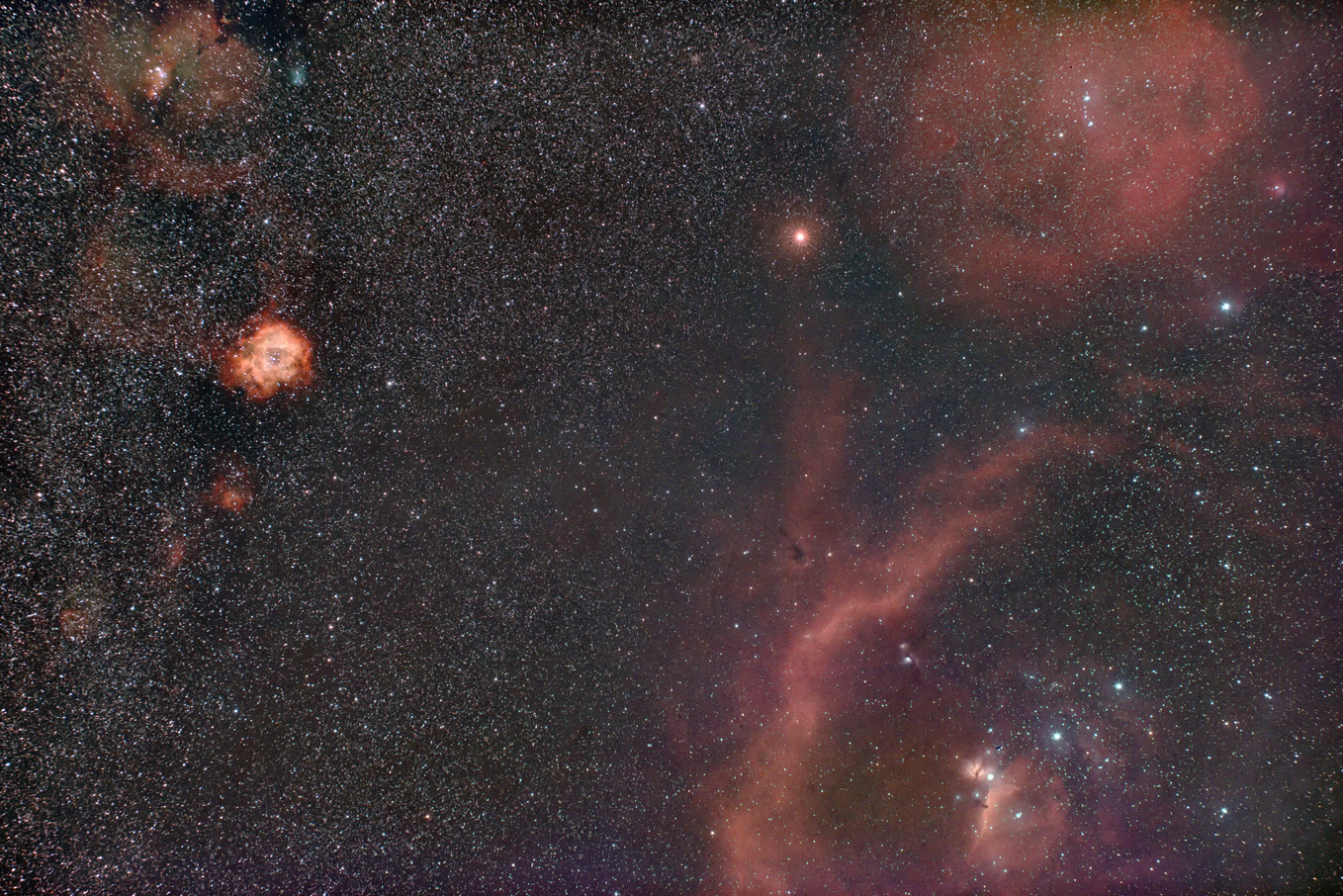| Barnard's Loop / Diffused Nebula, type E |
|---|
| R.A. | 05h 52m (2000.0) |
|---|
| Dec. | -03° (2000.0) |
|---|
| Apparent Size | 600×30' |
|---|
| Real Size | - |
|---|
| Magnitude | - |
|---|
| Distance | 1500 light yrs. |
|---|
|
| NGC2237-9 / Diffused Nebula, type 1 E |
|---|
| R.A. | 06h 30m 18.0s (2000.0) |
|---|
| Dec. | +05° 03' 00" (2000.0) |
|---|
| Apparent Size | 64×61' |
|---|
| Real Size | 67×64 light yrs. |
|---|
| Magnitude | - |
|---|
| Distance | 3600 light yrs. |
|---|
| Other IDs | Sh2-275, LBN949 |
|---|
|
This picture has captured the area of the Barnard's Loop spread at whole of Eastern Orion and the Rosette Nebula in the constellation of Monoceros with a medium ranged telephoto lens.
This celestial field is mainly occupied with the area of Monoceros with a faint winter's Milky Way crossing slantingly.
Though these diffused nebulae can be hardly seen with naked eyes, they're very photographed.
It's considered that the Barnard's Loop is a remnant of supernova exploded about one million years ago. It's a star's remains,
and it would be reversely said that the Rosette Nebula is a cradle of stars, because the nebula includes the dark gaseous lumps called globules and new stars are under being born from them.
There is a dynamic metempsychosis in the cosmic world although we cannot recognize that during our lifetime.
|

